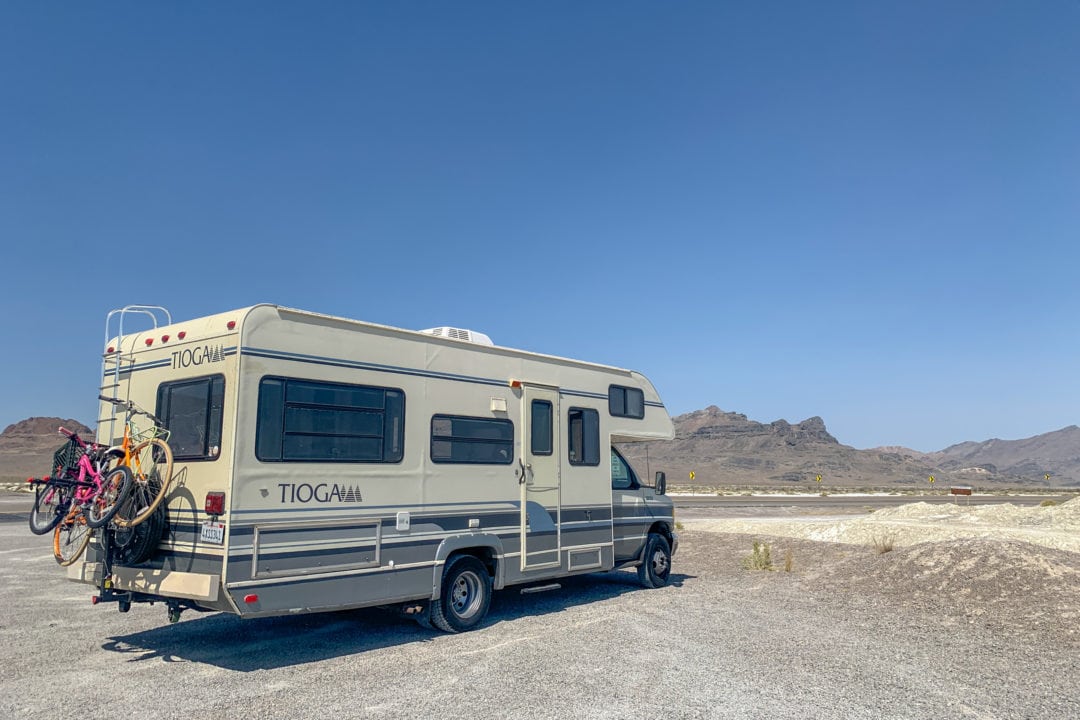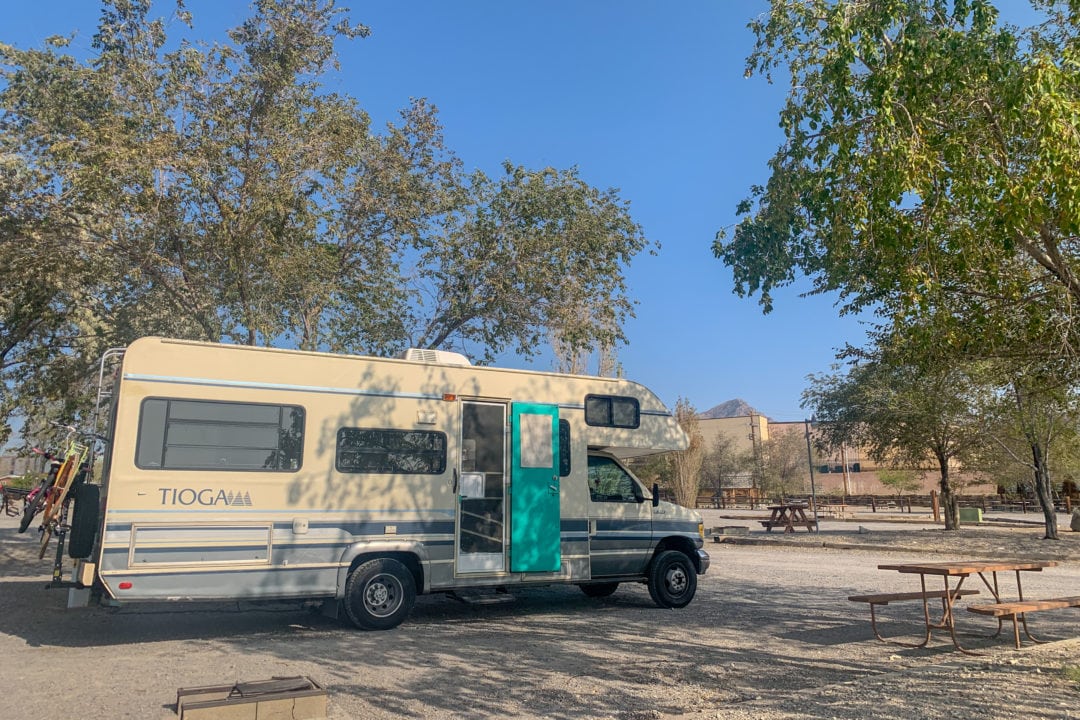I have a tendency to take action without thinking things all the way through. I’ve survived some really hard things—including cancer—so I have a lot of faith in my ability to figure things out. This is how I ended up driving more than 3,000 miles in a 25-year-old motorhome with my 10-year-old daughter—despite never having driven a large vehicle in my life.
It’s summer and we’ve been homebound due to COVID-19 for five months. The mental health of everyone in our blended family is beginning to deteriorate, and I find myself craving a change of scenery. My daughter is becoming more and more of a homebody, not wanting to leave the house to go on walks with the dog or ride her bike; she misses her friends, and I can’t blame her.
On the drive back from a doctor’s appointment I have a thought: What if I take her out in the motorhome, just the two of us?
Less than a month later, we’re on the road.

Trip anxiety
Before the trip, I wonder if I’m making a decision I will regret. “I have never done this,” I think. “What if it’s too hard to drive? What if I can’t empty the sewer tanks? Should I be worried that we’ll get murdered? Should I have planned more? Why am I not more worried?”
I’ve never taken a motorhome out on my own and have little to no idea what I’m doing, but to my surprise, driving our 24-foot motorhome is actually fun. Three days into the trip, I’m still thrilled to be on our way to Montana, and to places I’ve always wanted to see.
The only problem is my daughter. “I want to go home,” is her constant refrain, and, “I miss the dog.”
I had the forethought to pack art supplies, get a data plan for my daughter’s iPad so she could do schoolwork, and download a bunch of books to her Kindle. But for her, nothing—not even the beauty of nature—beats the comforts of home.
Our rooster wake-up call on the first morning doesn’t interest her at all. She’s unimpressed with the scenery of Lake Tahoe, and the long stretch of desert in Nevada bores her. I begin to worry that the trip won’t be fun at all with her frequent, desperate pleas for me to turn around.




But just as I’m about to give up hope, the novelty of Utah’s expansive Bonneville Salt Flats finally hooks her. I almost skip the stop—in the morning, I miscalculated checkout time at the RV park, which was right in the middle of my daughter’s fifth grade Zoom class. We spent hours doing schoolwork from a parking lot intended for truckers, and I was eager to get on the road.
I’d been to the salt flats years before, though, and my gut tells me to stop.
“This isn’t salt,” my daughter says incredulously, her face lighting up when she touches the ground and licks her finger. Some things, as it turns out, are different enough from home to make it worth the drive.
Yellowstone and gray rocks
From the salt flats, the trip becomes less of an uphill battle. We take a long haul to Yellowstone National Park, where my daughter takes her job as “wildlife scout” very seriously. Thanks to her diligence, we get the once-in-a-lifetime opportunity to see wolves feasting on an elk.
But it isn’t until Glacier National Park that I know she’s fully invested. When I show her a photo of an incredibly clear lake filled with multi-colored rocks, she’s thrilled. The lake is out of our way by about two hours, but I know it will be worth it.
As we pull up to Flathead Lake, the background looks notably different than the photo. My daughter leaps out of the motorhome and runs toward the lake, stopping short at the shoreline.
“Mom,” she says. “These rocks are gray.”
I realize immediately that I’ve made a mistake—and that the correct lake, Lake McDonald, is nearly three hours north into the park. The drive will extend our trip by at least three days. “I think we have to go, Mom,” my daughter says, and I agree.


Home again
We fall into a comfortable driving pace, stopping for the night or at interesting spots we find along the way. I make meals in our tiny kitchen; my daughter does schoolwork in the mornings, takes long walks across rope bridges, and learns how Oregon’s Crater Lake was formed.
There are times—especially when we see a cute dog—that we get a bit homesick, but “I want to go home,” quickly comes to mean returning to the motorhome after an excursion more often than it’s in reference to returning to California.
When we finally do make it back, and I begin to unpack the motorhome, I can’t believe the trip is actually over. In some ways, it goes by slowly—especially when I can’t get the shower to work or when I have to empty the sewage tank yet again. But in other ways, it feels as if we could have been on the road for much longer.
Adventures into the unknown teach us valuable life lessons in an expedited amount of time. We make mistakes, and then we figure out how to fix them. We get disappointed, but we quickly move on. There are highs, there are lows, and there are long stretches in between when we are simply in the process of getting from one place to another.
We learn, together, to be a little more resilient; when we get out of our comfort zones, we see that sometimes the best things in life really are worth the extra effort.
Next time, though, we’re bringing the dog.







